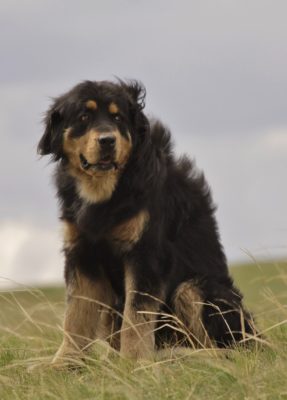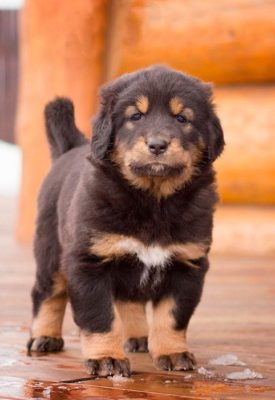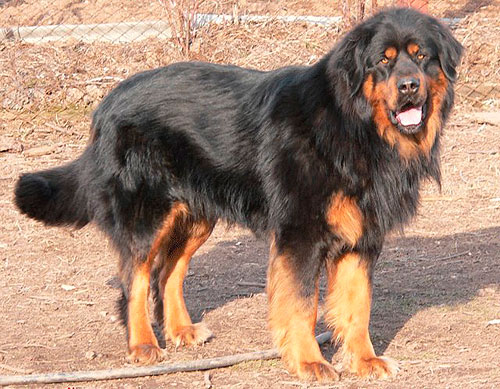Buryat-Mongolian Wolfhound
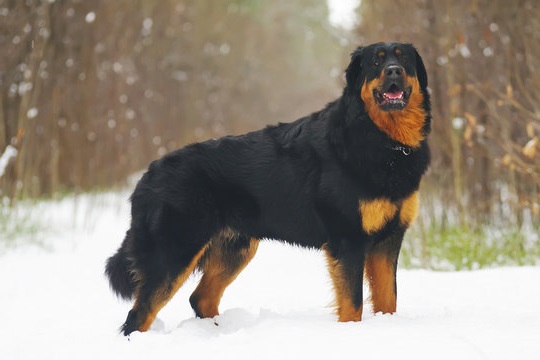
The behavioral reactions of the Buryat-Mongolian Wolfhound are similar to those of a wolf. He perceives people as his pack, loving, caring for his master and his children. This huge dog loves to spend time with children and play different games with them. It is not for nothing that this dog is used as a rescue dog. It is so intelligent that it can even be a babysitter for the younger members of the family. But animals that happen to be in the territory of the wolfhound can be susceptible to aggression.
Table of Contents
Breed Information
| Another Name | Hotosho, Hotosho Nokhoy, Bankhar, Banhar |
| Origin | Russia, Mongolia |
| Height | 65-75 cm |
| Weight | Males 45-70 kg Females 45-65 kg |
| Fur | Straight and long |
| Color | Black and tan with a white spot on the chest, brown, black, gray in different combinations |
| Lifespan | 12-14 years |
| FCI Classification | Breeds outside the FCI classification |
| Group | Watchdogs |
| Price | From $850 |
Breed Photos
Origin History
The Buryat-Mongolian Wolfhound is considered an indigenous breed that was bred in Buryatia and Mongolia. The very name of the breed is translated as “backyard wolf”. The breed is deemed ancient; archeological excavations found the confirmation of this fact in Hun’s ancient settlement. The Wolfhound was used not only as a guard or fighting dog but also for hunting.
At the beginning of the twentieth century, the breed was practically extinct. Only thanks to the efforts of Soviet cynologists Teregulov and Batov in the 1980s, the Buryat-Mongolian Wolfhound began to regain popularity.
Appearance
The head of the Buryat-Mongolian Wolfhound is large, and the muzzle is rather short. The ears are floppy, medium-sized, triangle-shaped. The body is muscular, stretched format. Limbs powerful, well-developed. The tail is quite heavy and drooping.
The wolfhound’s coat is straight and long. Color is usually black and tan with a white spot on the chest. Also allowed brown, black, gray color in different combinations.
Character
The behavioral reactions of the Buryat-Mongolian Wolfhound are similar to those of a wolf. He perceives people as his pack, loving, caring for his master and his children. This huge dog loves to spend time with children and play different games with them. It is not for nothing that this dog is used as a rescue dog. It is so intelligent that it can even be a babysitter for the younger members of the family. But animals that happen to be in the territory of the wolfhound can be susceptible to aggression.
One of the breed’s peculiarities is a late maturity; the individual is fully formed by three or four years. However, this does not prevent the pet from performing its functions, such as guarding the territory.
If you work and are not ready to spend a lot of time with your pet, it is better not to consider this breed. The Buryat-Mongolian Wolfhound needs attention from the owner, constant interaction, and play. If the dog is only fed and walked around, the pet will become miserable. This breed is very attached to a specific person and chooses one owner for life.
Wolfhound has a stable psyche and is indifferent to strangers. But despite its aloof behavior, it always keeps a close eye on its surroundings and is ready to protect its master at any moment. The wolfhound is not aggressive towards other dogs. But the pet will defend its territory from intrusion.
This breed is good to use as a yard guard. The Wolfhound is well adapted to cold temperatures and can spend a lot of time out in the cold. The breed cannot live in an urban environment. The dog needs a large area and a separate enclosure. If the wolfhound does not spend its energy accumulated during the day, it will begin to show it in aggression or petty nastiness.
Care
The owner only needs to stick to the basic rules of care for the wolfhound. The hair should be combed out with a special brush. In summer, the breed is prone to heavy shedding. This process protects the pet from barbs that can get stuck in the long hair and from overheating in the sun. After a walk, be sure to check your pet’s coat for pests. Nails should be clipped as needed. Don’t forget about the mouth and ear hygiene.
Training
A sufficient amount of time should be devoted to the education of the Buryat-Mongolian Wolfhound. The owner of this breed should not be a novice in training but show confidence in his every action. This breed has good intelligence and can learn different commands quickly enough.
Do not use physical force or raise your voice at your pet. A wolfhound does not tolerate unfair treatment and ignores undeserved punishment from his owner. Persistence, patience, and consistency can make your training more accessible.
Common Diseases
The Buryat-Mongolian Wolfhound has a strong immune system. The dog can suffer from eating disorders from improper nutrition. If you overfeed your pet, there is a chance of developing dysplasia. This condition usually shows up by the end of the first year of life. To avoid joint abnormalities, you should take your pet for regular walks and get him accustomed to bathing in a body of water. Don’t forget to vaccinate your pet; this will help prevent plague infection.
The Buryat-Mongolian Wolfhound is prone to such diseases:
- joint problems;
- bloating and gastric congestion;
- heart disease;
- hip dysplasia.
Nutrition
The diet of the Buryat-Mongolian Wolfhound must be balanced. It is not necessary to overfeed the pet; portions should correspond to physical exertion. You can make a special feeding regime. The daily ration should consist of meat, cereals, and vegetables. Exclude tubular bones, sugary and fatty foods. If the dog moves a lot, it is worth observing a water regimen.
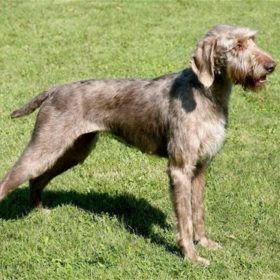 Slovak Rough-haired Pointer
Slovak Rough-haired Pointer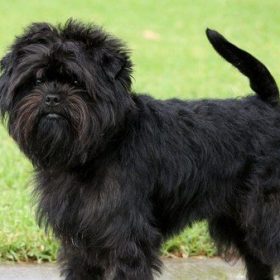 Affenpinscher
Affenpinscher Weimaraner
Weimaraner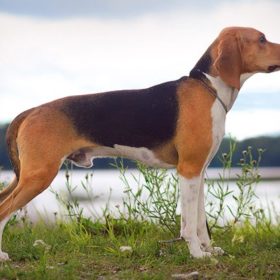 Estonian Hound
Estonian Hound Shar Pei
Shar Pei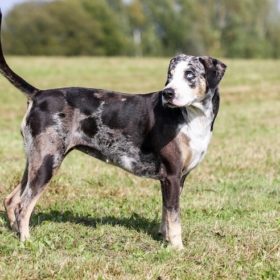 American Leopard Hound
American Leopard Hound